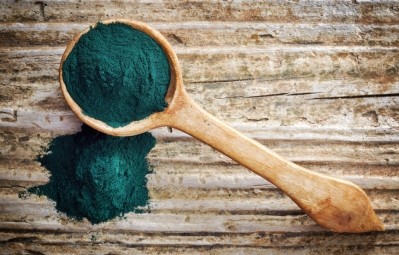Wild taps spirulina for natural colors range

The ADM subsidiary said its Rainbow Range of concentrates and extracts allowed sugar confectioners to create powerful green and blue tones that catered to consumer demand for natural and clean label products.
Up until recently, confectioners had claimed artificial color Brilliant Blue was the only acceptable option for blue-colored candies.
Natural alternative
Helene Möller, product management for ingredients at Wild told ConfectioneryNews that her firm’s spirulina blue offered fresh possibilities.
“For blue there was no alternative so this gives the confectionery producers the possibility to support fruit flavors like blueberry, plum, black currant etc. or fantasy flavors. Also in green there are many more nuances possible - from gooseberry to mint.”
Wild has also developed a natural green with spirulina and safflower that can create a delicate mint color, a fresh apple shade or a bright pear hue.
Use low temperatures
Jelly Belly recently told this site that it was experimenting with spirulina derived blue and green colors after the ingredient was approved for use in candy and gum in the US by the Food and Drink Administration (FDA). The approval came after a petition from US giant Mars.
Spirulina has been allowed in foods in the EU for some time and Haribo currently uses it for in some of its products form Germany such as its Sour Smurf range. Nestlé UK also uses the natural color for its blue Smarties.
“When applying spirulina, confectioners have to pay close attention to the temperature: it's not recommended to use a high temperature for a longer time. To achieve the best results it’s important to work with the lowest temperature possible,” said Möller.
Others in the palette
Wild expects demand for natural colors to be strongest Germany, France, England, Italy and Spain.
Its Rainbow Range also includes red colors that use combinations of purple carrot, grape, elderberry and blackcurrant.
“They allow manufacturers to replace carmine products in some applications,” said Wild in a statement.
The Center for Science in the Public Interest (CSPI) has urged manufacturers to move away from carmine as it is derived from the dried, pulverized bodies of cochineal insects.
Wild said that it could also combine spirulina with purple carrot or hibiscus to create purple shades.
The supplier also has orange colors derived from vegetable sources, which use blends of safflower and concentrates that contain anthocyanins.
In October last year, French ingredients firm Naturex claimed to be the first supplier to offer natural blue spirulina coloring for lipophilic confectionery applications such as compound coatings.


























